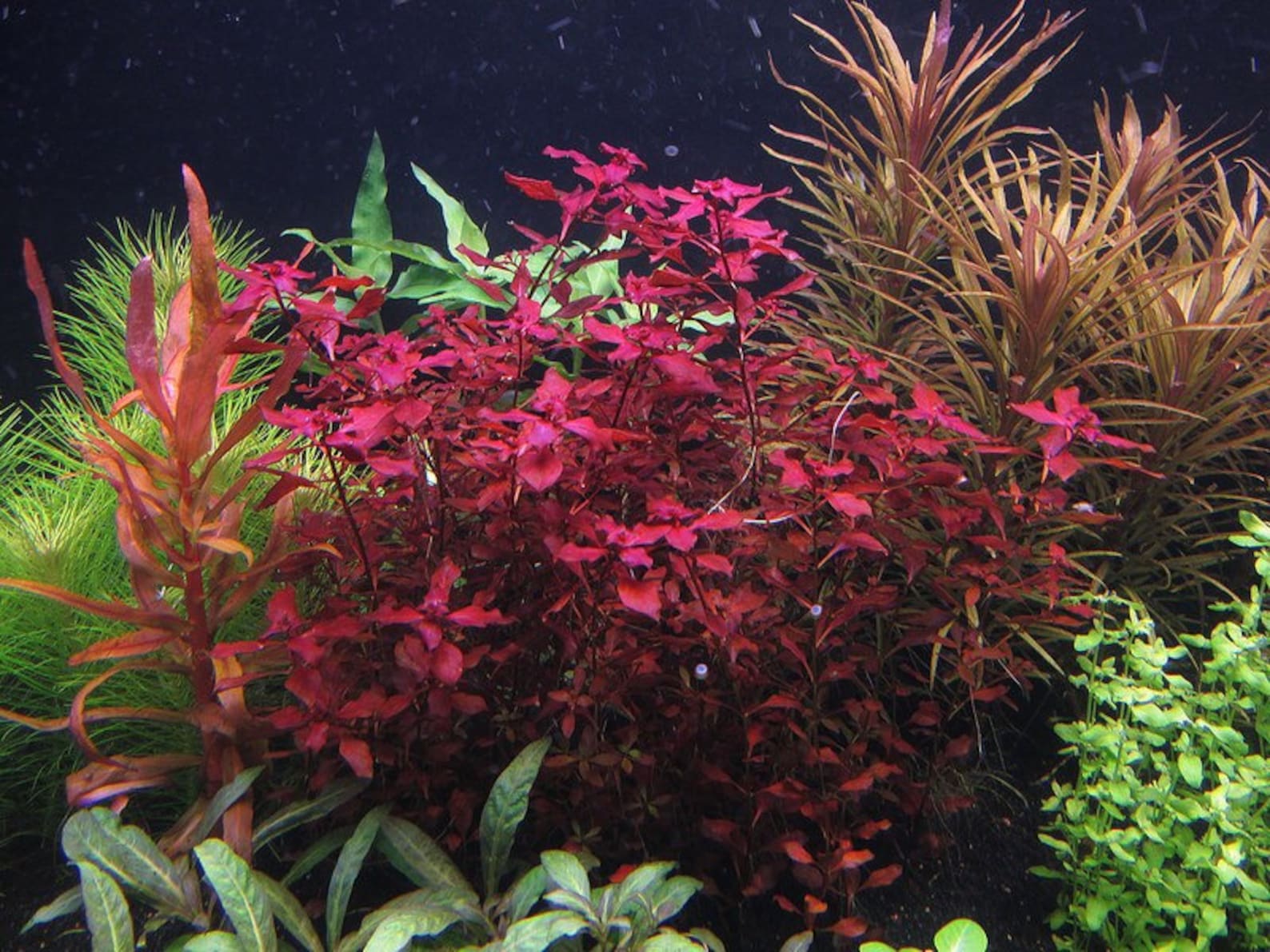Red plants for aquariums are a stunning and captivating addition to any aquatic ecosystem. Their vibrant hues and diverse forms create a mesmerizing display that adds depth and beauty to underwater landscapes.
From the delicate Rotala rotundifolia to the majestic Ludwigia repens, red aquarium plants offer a wide range of sizes, shapes, and growth patterns to suit every aquarium design. Their unique characteristics make them a popular choice among aquarists seeking to enhance the aesthetics of their tanks.
Popular Red Plants for Aquariums

Red plants add a vibrant and striking touch to aquariums, creating a visually captivating underwater landscape. These plants come in various shapes, sizes, and growth patterns, each offering unique aesthetic appeal and ecological benefits.
Some of the most popular red plants for aquariums include:
Ludwigia Repens
- A stem plant with reddish-brown leaves that can reach a height of 12-18 inches.
- Prefers bright lighting and moderate water flow.
- Propagates easily through stem cuttings.
Ludwigia Repens is known for its ability to add height and color to the midground or background of an aquarium.

Rotala Indica, Red plants for aquarium
- A stem plant with narrow, reddish-orange leaves that can reach a height of 10-15 inches.
- Requires high lighting and good water flow.
- Propagates easily through stem cuttings.
Rotala Indica is a fast-growing plant that adds a vibrant red color to the midground or background of an aquarium.

Alternanthera Reineckii
- A stem plant with reddish-purple leaves that can reach a height of 6-10 inches.
- Prefers moderate lighting and water flow.
- Propagates easily through stem cuttings.
Alternanthera Reineckii is a compact plant that adds a deep red color to the midground or foreground of an aquarium.

Care Requirements for Red Aquarium Plants

Red aquarium plants require specific care to maintain their vibrant coloration and healthy growth. Understanding their light, water parameter, and fertilization needs is crucial for success.
Lighting Needs
Red aquarium plants generally prefer high-intensity lighting to stimulate chlorophyll production, which enhances their red pigments. Optimal light duration is around 10-12 hours per day. Insufficient lighting can result in pale or faded coloration.
Water Parameters
These plants thrive in slightly acidic to neutral pH levels (6.0-7.5). Water hardness should be in the range of 5-15 dGH, and temperatures between 72-82°F (22-28°C) are ideal. Stable water parameters are essential for optimal growth and color retention.
Fertilization
Red aquarium plants benefit from regular fertilization to supplement nutrients required for vibrant coloration. Iron and potassium are particularly important, as they are essential for chlorophyll and carotenoid production. Fertilization should be done weekly or bi-weekly, depending on the plant species and nutrient demand.
Design Considerations for Using Red Plants in Aquariums: Red Plants For Aquarium

Incorporating red plants into aquarium designs can create stunning visual effects. Understanding color theory and applying design principles can help aquarists showcase the beauty of these vibrant plants.
Creating Visual Impact
Red is a powerful color that commands attention. By placing red plants as focal points, aquarists can create dramatic effects. Using contrasting colors, such as green or blue, can enhance the vibrancy of red plants. Additionally, grouping red plants together in clusters or rows can create a sense of depth and movement.
Complementary Colors
Color theory suggests that complementary colors, such as red and green, create a visually pleasing contrast. Incorporating red plants alongside green plants can enhance the overall aesthetics of an aquarium. By placing red plants in the foreground and green plants in the background, aquarists can create a sense of depth and balance.
Aquarium Layouts
The layout of an aquarium can greatly influence the impact of red plants. Symmetrical layouts, with red plants placed on both sides of the tank, can create a sense of harmony. Asymmetrical layouts, with red plants concentrated on one side, can add a touch of drama and interest.
